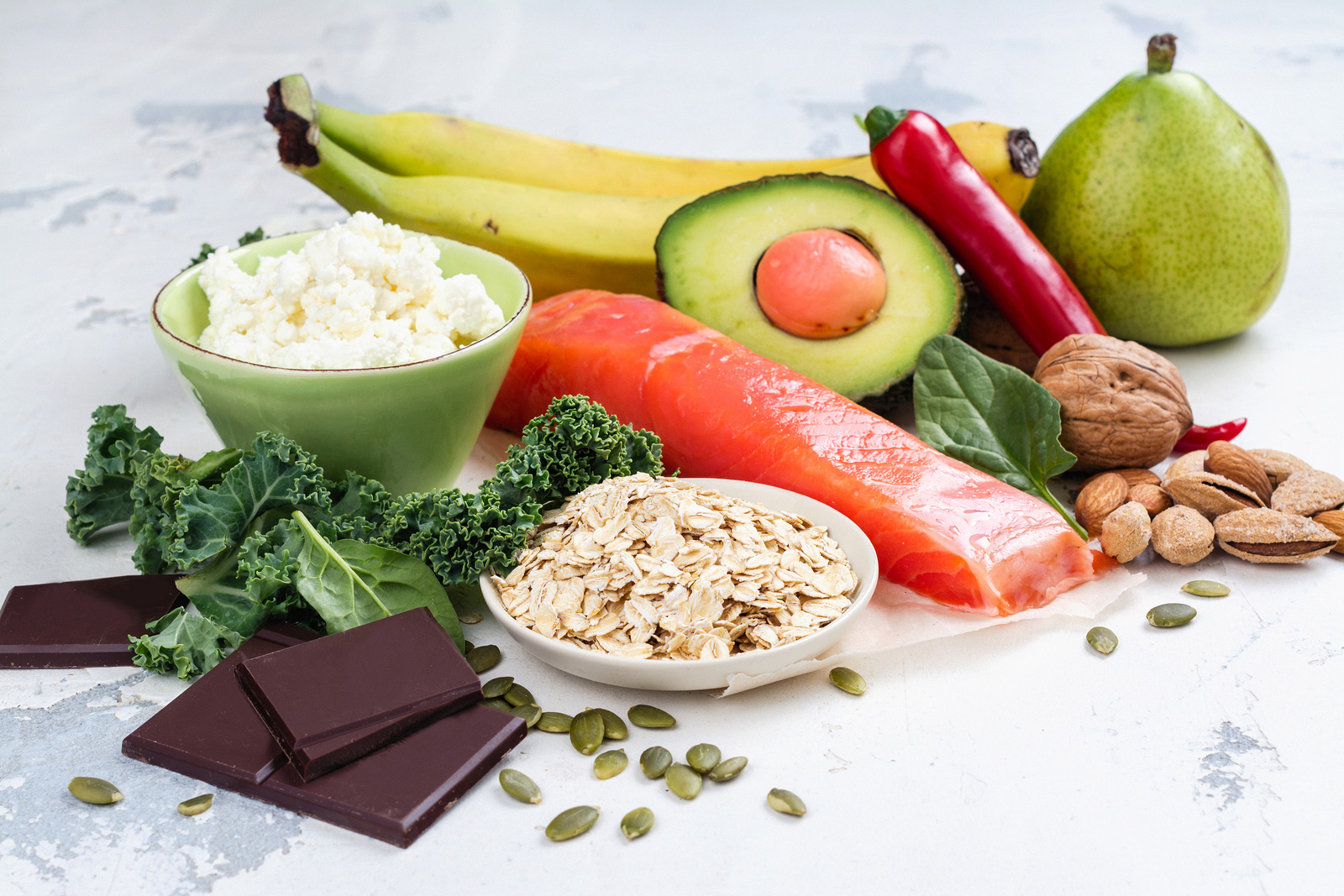Updated 11/25/2020
Unlike many of my patients, who find me after becoming frustrated with a health care system that fails to spend the time needed to discover the root causes of uncomfortable symptoms, Anna came to me proactively for a general health assessment.
She’d seen friends who hadn’t paid much attention to their health suddenly sidelined by major concerns, and she didn’t want to follow that path.
Because I like to gather baseline data, I did all the usual tests that I recommend for women.
Based on our conversation, I didn’t expect to see elevated glucose or cholesterol levels in the routine blood tests I ran. But when her bloodwork came back, those numbers were high, though still within the conventional “normal” range.
Anna was surprised when I told her that these factors put her at elevated risk for Type 2 diabetes. She wasn’t seriously overweight, and she didn’t have a family history of diabetes, so it had never even occurred to her to worry about it.
Anna’s way of thinking isn’t uncommon, but it leaves many women who don’t understand all of the risk factors vulnerable. While age and body weight are two of the most well known risk factors for Type 2 diabetes, there are numerous others to consider.
Insulin resistance is on the rise, and so is Type 2 diabetes. The two are closely connected, so it’s important to understand how one can lead to another – and what you can do to prevent either from developing.
The first step, of course, is knowing how many risk factors you have in the first place. Knowledge is power, and you can’t change some things (like genetics) you have a lot of power over others.
In this article, we’ll look at what Type 2 diabetes is, how it develops, common risk factors, and what you can do to prevent developing the condition.
What is Type 2 Diabetes?
Unlike Type 1 diabetes, which has long been considered an autoimmune disorder, type 2 diabetes is more commonly identified as a metabolic disorder.
That means Type 1 diabetes, which typically develops much earlier in life, is determined by genetics and cannot be controlled or reversed with diet or lifestyle changes, while Type 2 diabetes can be impacted by these choices.
Although research in recent years has identified potential autoimmune components in Type 2 diabetes, it’s still widely accepted that in the early stages it can be managed with diet and lifestyle modifications.
Type 2 diabetes develops when your cells can’t recognize or absorb insulin produced by your pancreas. It’s important to note that recent research is exploring Type 3 diabetes as well. Researchers have discovered that insulin is released from the brain as well as the pancreas.
Insulin is necessary to help neurons in the brain absorb glucose to function properly. If these cells become resistant to insulin (Type 3 diabetes), Alzheimer’s disease or other dementia can result.
The good news on that front is that lifestyle adjustments that help prevent insulin resistance impact all of the body’s cells – including those in the brain.
What is insulin resistance?
Insulin resistance means your body is unable to process insulin correctly. Insulin helps to regulate glucose levels in the blood. Typically, glucose is carried to individual cells through the blood and insulin lets these cells know they should absorb that glucose.
If too much glucose is circulating, the cells become desensitized causing the body to release more insulin and raising blood sugar levels. If insulin levels stay high long term, the cells will eventually stop responding to the signals insulin is giving.
Insulin resistance can be behind many common diseases, including diabetes. And a major risk factor for developing insulin resistance is diabetes. It’s one of many damaging cycles that can seriously impact your health.
Who is at Risk for Type 2 Diabetes?
The honest answer here is everyone. Although genetic good fortune may allow some people to get away with eating high sugar diets while being mainly sedentary for a lot longer, the more we ignore healthy choices, the more we put ourselves at risk.
Some people begin to experience the harsher effects of this type of negative lifestyle a lot sooner. And some, like Anna, may be developing hidden risk factors without even knowing it.
The good news is that you can always start to introduce healthier habits and then the likelihood of developing diabetes can dramatically decrease. If you start to introduce a mixture of positive, healthy eating habits as well as increasing your activity level, you will begin to see positive changes to your health – on both the inside and the outside of your body!
Ignoring your risk for developing type 2 diabetes just isn’t wise. Early detection is key, especially since incidence of type 2 diabetes is quickly rising in the US. I believe that if you have insulin resistance you probably already have metabolic syndrome and you’re on the fast track towards type 2 diabetes.
Paying attention to where you are today can help prevent you from becoming part of this growing statistic. Recognizing the potential for a problem even if no symptoms have developed to alert you to the possibility can make a big difference.
Risk factors don’t mean you’ll definitely develop diabetes, and even if Type 2 diabetes has already developed, you can treat and even reverse it by changing your diet and lifestyle and making healthier choices.
But first, you have to understand which factors increase your risk. Let’s take a look at that now.
Common risk factors
The following are some of the most common risk factors associated with insulin resistance and type 2 diabetes:
- Age above 45 years old
- Being overweight or obese (BMI greater than 24 for women)
- Having a first-degree relative (sibling or parent) with diabetes
- Being of African-American, Hispanic/Latino, American Indian, Asian American, or Pacific Islander descent
- Having had or have gestational diabetes during pregnancy
- Giving birth to a baby weighing greater than nine pounds
- Blood glucose levels greater than 99 mg/dL is an early marker
- Blood pressure readings commonly 140/90 or higher is another early marker
- Lipid profiles that show high LDL “bad” or unbalanced cholesterol (your HDL is less than 35 mg/dL or your triglyceride level is over 250 mg/dL) Triglyceride levels are an easy first marker to watch as the correlation is so high between elevated levels and insulin resistance/metabolic syndrome
- An inactive lifestyle
- Darkening skin around the neck or armpits (acanthosis nigricans)
- Blood vessel problems that affect the heart, brain or legs
A number of these common risk factors for diabetes are interrelated. For example, if you are overweight you are also more likely to have high blood pressure, unbalanced cholesterol levels and blood vessel problems.
That means that the more items on the list that you check off, the greater your overall risk is. Even if you have several of these factors, you shouldn’t panic. Because they are connected, if you make certain lifestyle changes, you’ll impact many of these at once.
The modern “Western diet” of over-processed foods, refined sugar products, preservatives, and low fiber automatically puts people at a higher risk of developing diabetes than a diet high in fresh, whole foods. That’s because highly processed foods filled with sugar and chemicals often are behind an inactive lifestyle (due to lack of energy), high blood pressure, high cholesterol levels and an unhealthy weight.
You can impact your risk profile
The most important thing to realize is that knowing your risk of developing type 2 diabetes early is far better than realizing it late in the game. No matter how high your risk may seem, there’s always hope. That’s why I told Anna it was good news that we’d discovered those early markers when we did. I could give her some concrete advice on changes she could make to lower her risk and stay healthy.
Here are my top tips for changing habits to reduce your risk factors:
- Stick to a diet of lean meats and protein, high-fiber, whole grains, leafy greens, and fresh vegetables, legumes and fruit. The outside edges of the grocery store hold the healthiest choices – avoid the inner aisles filled with processed foods full of added sugar and ingredients you can’t pronounce. Cut back on salt, and pay attention to your portion sizes. Half of your plate should hold non-starchy vegetables at meal times.
- If you have weight to lose, talk to your healthcare provider about the best program to help you reach and maintain a healthy weight. See my weight loss program.
- To keep blood sugar levels (and insulin levels) stable, eat three meals and two snacks per day. Meals should contain protein. Carbohydrates should come from fruits and vegetables and stay under 15 grams per meal. Snacks should contain no more than 7 grams of healthy carbs. Don’t forget to pay attention to fiber!
- Don’t avoid healthy fats. Essential fatty acids (EFAs) are important in avoiding or healing insulin resistance. Tuna, salmon, eggs, avocado, and flaxseed are good food sources. You can also take a daily supplement to ensure you’re getting the EFAs you need.
- A high quality multivitamin can also help decrease carbohydrate and sugar cravings, and provide your body with the essential vitamins and minerals it needs to balance hormones and avoid insulin resistance.
- Inactivity can quickly lead to becoming overweight/obese, as well as impacting insulin levels and the adrenal glands. Regular exercise is an important component to reducing risk factors and help prevent the development of Type 2 diabetes. That doesn’t mean you have to participate in extreme sports. Any movement is better than none, and participating in regular exercise like walking, biking, or strength training three to four times per week can make a big difference.
- Make good lifestyle choices most of the time. Avoid overconsumption of alcohol and caffeine. Set a regular sleep schedule to be sure your body is getting the time it needs to rest and rejuvenate. Stop smoking. All of these promote overall good health.
- Stay well hydrated by drinking plenty of water. Avoid soda, juice, and other sugar filled beverages.
There are always ways to prevent this disease, or reduce the impact if you’ve already developed it. But you have to know where you stand first. You have so much control over your own health. If you pay close attention, and make some positive, healthy changes in your life, it’s never too late to change your risk profile.







